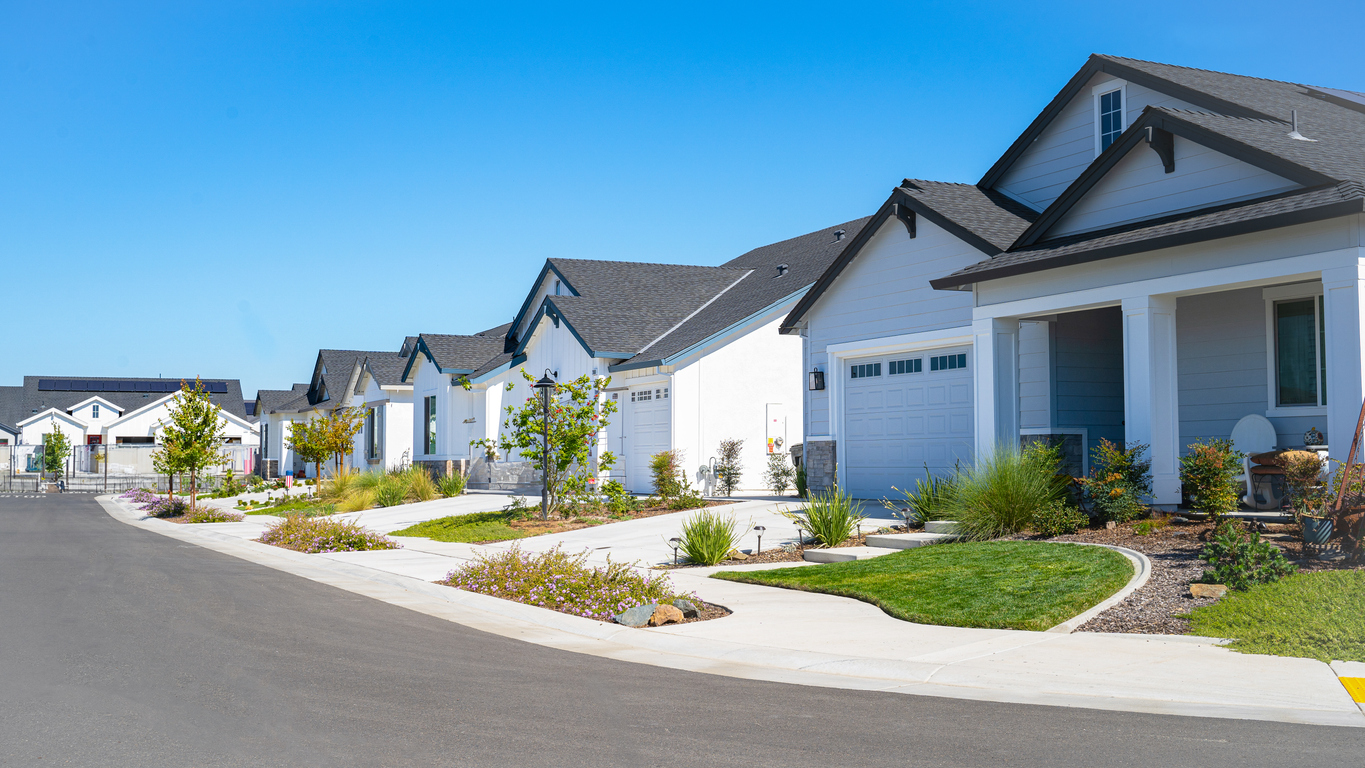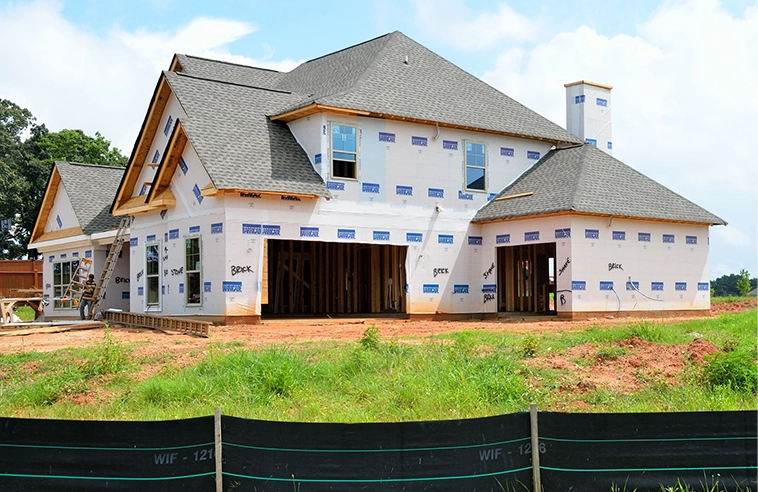Green Construction: Recycling Building Materials
It goes without saying that constructing buildings that are less environmentally damaging is good for all the living things on our planet. But it’s not only the right thing to do. There’s also owner demand for greener buildings. According to a recent Dodge Data & Analytics report, World Green Building Trends 2021, 42% of architects, engineers, and contractors listed “client demands” as one of the top three triggers for green construction.


Owners also experience financial benefits by having greener buildings, mostly due to reductions in operating costs but also due to increase in asset value:


But what is a green building? There are two broad categories in which a building can be greener than others: lower ‘operational carbon’ and lower ‘embodied carbon’.
Operational carbon is carbon dioxide and other greenhouse gas emissions that result from a building’s energy consumption during operation, such as burning fossil fuels for heating.
Embodied carbon is carbon dioxide and other greenhouse gas emissions from manufacturing, transporting, and installing building materials. It also includes emissions that result from the maintenance (in contrast with the operation) of a building, demolishing the building, transporting demolition waste, and recycling or disposal of demolition waste.


Image from the Carbon Leadership Forum
To transform the built environment from a major emitter of greenhouse gases to a central solution to climate change, the non-profit organization, Architecture 2030, emphasizes that attention must be given to both embodied carbon and operational carbon.
To reduce embodied carbon emissions, reuse is an important factor:
“Achieving zero embodied emissions will require adopting the principles of reuse, including renovating existing buildings, using recycled materials, and designing for deconstruction; reduce, including material optimization and the specification of low to zero carbon materials; and sequester, including the design of carbon sequestering sites and the use of carbon sequestering materials.” Architecture 2030
There are many topics to delve into on the subject of making construction greener. This article will focus on reuse, highlighting three examples of it: reclaimed wood, recycling drywall, and designing for disassembly.
Reclaimed wood
According to the style experts at Country Living magazine:
“It seems like everyone is in love with reclaimed wood these days. From its environmental benefits to the rustic charm it adds to home projects, to say it’s trending is a downright understatement. One of the most popular applications is to cover a wall with weathered planks to add instant patina to any space. But the ideas for using reclaimed wood are practically endless.” 6 Best Places to Find or Buy Reclaimed Wood Near You
Instead of throwing wood from a demolition project into the landfill, some of it can be reclaimed and reused in new building and renovation projects — anything from beams and flooring to mantels and shelving. (Non-wood parts of a building, such as lighting fixtures, windows, and bathtubs can also often be salvaged and reused.)
Deconstruction is becoming more popular as an alternative to demolition, and companies specializing in deconstruction now exist all over the United States. Some cities even require deconstruction of certain buildings.
If a building is to be deconstructed, it needs to be structurally sound so that an appraiser can go into the building to assess the value of the materials that could be salvaged, and so the deconstruction team can get the materials. If the materials are donated, there can be significant tax benefits for the owners. Read more about the tax benefits of donating salvaged materials here: Deconstruction can be a tax-savvy alternative to demolition.
The market for reclaimed wood and other salvaged materials tends to be for higher end homes where homeowners are willing to pay for sustainable materials that add character to their homes. If you choose to build with reclaimed wood:
“Make sure upfront that you’ll be getting wood that’s been properly treated. Your dealer should agree to scrub the wood clean and use a metal detector to spot any hidden nails. The wood likely will be cut from a large beam, planed and — this is critical — kiln-dried.” Buying Guide for Reclaimed Wood


Reclaimed wood flooring — image from Vintage Wood & Forged Iron.
Read more about deconstruction:
- Organizations Working to Reduce the Disposal of Construction and Demolition (C&D) Materials
- Best Practices for Reducing, Reusing, and Recycling Construction and Demolition Materials
- Deconstruction Rapid Assessment Tool
- Sustainability Advocates Ask: Why Demolish When You Can Deconstruct?
Recycling drywall
While many building materials — such as wood — can be reused in new buildings, some building materials are more easily recycled for other uses. One example of this is drywall (aka wallboard or sheetrock).
The Environmental Protection Agency estimated that 13.2 million tons of drywall was sent to landfills in the United States in 2018.[1] Drywall is about 10% paper and 90% gypsum, a naturally occurring mineral. If gypsum buried in a landfill gets wet, it can contaminate ground water with sulfate and also release a toxic gas, hydrogen sulfide.[2] (Like other organic material, when the paper on drywall rots in the landfill, it produces methane, a greenhouse gas even more potent than carbon dioxide.)[3]
Unused offcuts of drywall can be donated to organizations like Habitat for Humanity. Instead of disposing of used drywall, the gypsum can be recycled from it and used in various ways. Although it can be used to make new drywall,[4] the paper that’s attached to the gypsum in drywall panels makes it difficult to process the gypsum to a high level of purity. And if the gypsum is too contaminated with paper, it could compromise the fire retardant properties of the drywall.
“Drywall gypsum can be recycled back into new drywall if most of the paper is removed. The paper limits the amount of recycled gypsum allowed in new drywall, because the paper content affects its fire rating.” Wallboard (Drywall) Recycling
So gypsum is more commonly recycled in small quantities as an ingredient in concrete.[5] Research is currently ongoing to create concrete that’s just as strong but uses larger quantities of recycled gypsum, and less cement, thus reducing the carbon footprint of concrete.[6]
Read more about recycling construction materials and construction materials made with recycled content:
- Comprehensive Procurement Guidelines for Construction Products
- When a Building Comes Down, Where Do Its Materials Go?
Design for disassembly and recovery
Recycling is sometimes difficult because two different ‘ingredients’ (e.g. gypsum and paper) are combined to make one product (e.g. drywall) in a way that makes them difficult to separate for recycling. If buildings were designed from the start so that disassembling them and (ideally) adapting and reusing them or, if that’s not possible, recycling the components, construction could be made a lot greener.
“Design for disassembly involves the selection of building products and construction of buildings done with the intent to easily reuse building products and systems at the end of the building’s functional life. Currently, common practice is to assume that a building is demolished and its components disposed of, but design for disassembly seeks to create a circular economy, in which everything that can be reused on a building is.”[7]
In the Dodge Data & Analytics report mentioned earlier, only 51% of owners were familiar with this type of design.


So there’s room for a lot of improvement, especially since the survey respondents rated ‘owner requirements’ as the top factor to encourage more design for disassembly.


Read more about design for disassembly and recovery here:
- A Guide to Design for Disassembly
- Fact Sheets on Designing for the Disassembly and Deconstruction of Buildings
Until more buildings are designed to be disassembled, reusing and recycling construction materials will often be difficult. Difficult, but nevertheless essential for lowering the embodied carbon of the built environment.
[1] 2018 Facts and Figures Fact Sheet [2] Construction & Demolition Recycling Association [3] Your Trash Is Emitting Methane In The Landfill. Here’s Why It Matters For The Climate [4] Construction & Demolition Recycling Association [5] Dalhousie University research explores use of recycled gypsum in concrete [6] Recycled gypsum powder from waste drywalls combined with fly ash for partial cement replacement in concrete [7] 2018 Facts and Figures Fact Sheet




